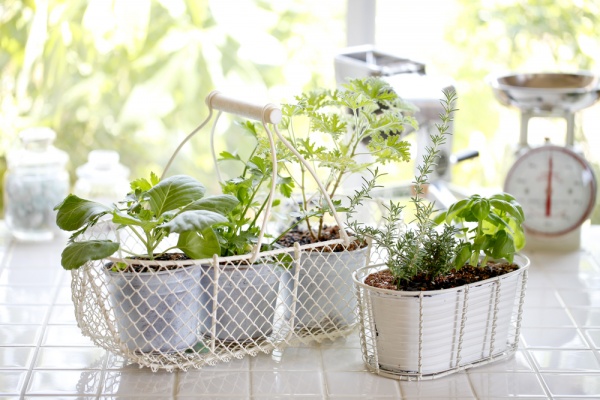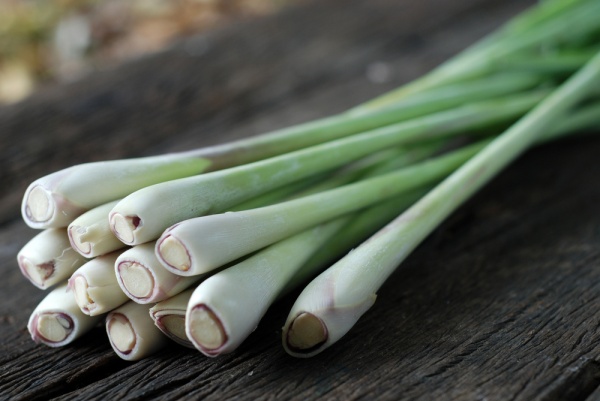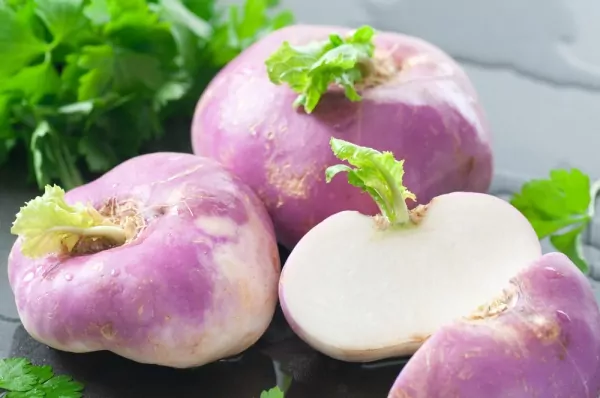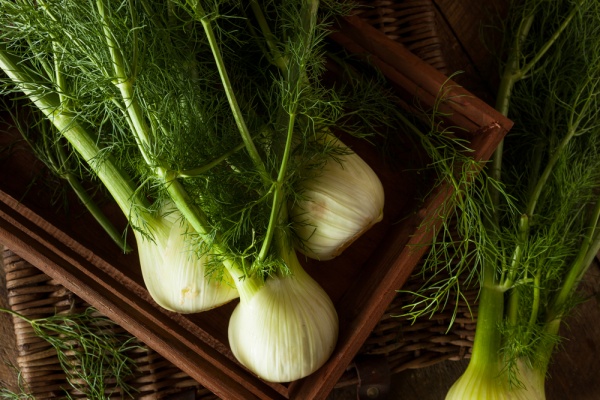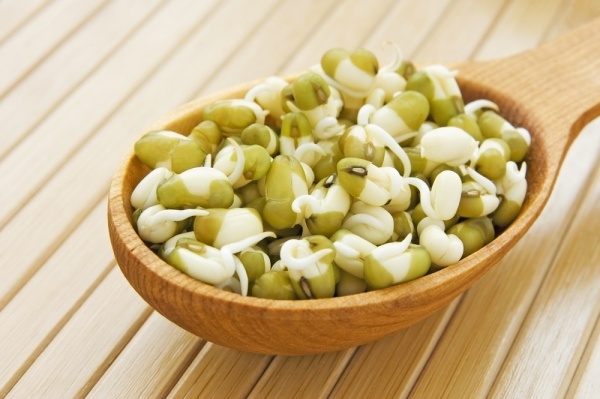10 Herbs and Vegetables That You Can Regrow
Going green has never been so easy. We deal with the re-use, reduce and recycle advertisements, billboards and catchy tune that just do not leave our heads. However, imagine my surprise when I found out that I can drastically reduce my carbon footprint of waste by just re-growing some herbs and vegetables that I have previously used.
By doing this I also significantly reduce my produce expenses and we all know how expensive those items on the grocery list can be – especially if you have a nice, big family like me. So whether you have a passion for the environment or just want to significantly start saving some money somewhere, here is a list of ten herbs and vegetables that you can regrow in your own backyard:
1 Ginger
This wonder plant is extremely low-maintenance and can be done indoors. It has been linked to relieving digestive problems such as nausea, loss of appetite, motion sickness and pain; on top of that it has this amazing ability to spice up and enrich your favorite dish with an exotic flavor.In order to regrow this miracle worker, all you have to do is: soak the ginger overnight in warm water, fill a pot with rich, well-draining soil; stick the ginger root with the eye bud pointing up from the soil, and place it in a spot that is warm, but doesn’t get too much direct sunlight. Remember to keep the soil moist (not soaked!)
Word of advice: ginger is a slow grower, only expect to see results in a few weeks’ time and have it full grown in a few months. However, don’t get discouraged – after those few weeks you can take shavings off it and start using it in your food, teas and or remedies.
2 Lemongrass
The freshness found in lemongrass is an unforgettable experience for all foodies out there. Its citrus flavor takes you back to summer memories filled with light-hearted laughter, and unforgettable people. Yet, finding the beautiful Asian culinary herb is often hard and leaves us frustrated in the search for it – an emotion it was never meant to evoke.So in order to prevent that from happening, why not regrow it? All you have to do is place the leftover root in a jar or vase, fill it with enough water to cover it and leave it in the sunlight for about a week. It will start growing like regular grass – that is when you can transfer it to your herb garden.
Lemongrass aids in treating digestive tract spasms, high blood pressure, pain, vomiting, achy joints, the common cold, and exhaustion. Now does that not seem like a good reason to start propagating some lemongrass?
3 Garlic
Yes, that superpower substance that not only scatters away those pesky vampires but also your noisy and high-maintenance boss. Garlic does more than shield away your enemies, though. It is highly nutritional with only a few calories, combats that common cold and helps with hair growth, as well as acne. Somehow got a splinter in your foot? Garlic will come to the rescue.Re-growing garlic is as simple as just removing a clove, planting it roots down in soil and keeping it in direct sunlight. Once you see new shoots form, cut the shoots back, allowing a new bulb to be produced.
4 Basil
A herb so full of benefits that it is often called the Holy Herb. The savory-sweet taste of this dynamic nutritional herb will definitely give you a glimpse of heaven, and all you have to do to ensure you have a never-ending supply of them is to ensure you have a stem of at least 4 inches high.Place the stem in a glass filled with water and then leave the glass in an area that has light, but not direct sunlight. In a few days, roots will form and this will be your indication that the herb is ready to be transferred to soil.
Basil has disease preventing and health promoting properties, as well as anti-inflammatory, anti-bacterial and other properties that help protect you against radiation. It is also packed with essential vitamins, minerals, and nutrients. As the saying goes, ‘Dynamite comes in small packages.’
Read also – 11 Nutrient-Dense Green Smoothies
5 Turnips
Turnips have been popular in our diet since the prehistoric times and for good reason: turnips provide a high amount of nutrients for a vegetable low in its amount of calories. It has also been linked to treating diverticulosis, fighting cancer, lowering blood pressure, maintaining vision and weight loss.The tops of these root plants have to be placed in a container filled with water, in a couple of days, you will see new green tops grow, allow the root to continue growing, wait until you see it is ready to be moved into the soil and then plant it into Mother Earth.
6 Fennel
This liquorice-flavored plant is a storehouse of vitamins, minerals, and nutrients – especially those that aid in bone and heart health, blood pressure, immunity, cancer, metabolism, inflammation, iron absorption and weight management.In order to propagate fennel, you need an inch of the base from the fennel, place the base in a glass or container with about a cup of water in an area with direct sunlight. When you notice the root becoming strong with new green shoots growing out of the base, you can transfer it to soil.
7 Onions
Let’s be honest, chopping up an onion is something we dread doing. The smell lingers on our hands for a few days and despite our efforts, tears always make an appearance. However, for centuries these tear-evoking vegetables have also aided in the fighting off diseases. It is due to this, as well as the fact that it just has a way of delightfully enhancing the flavor of every dish, that it deserves to have its time in the spotlight.Onions improve immunity, regulate blood sugar, lowers LDL Cholesterol (if consumed raw), reduces inflammation and prevents cancer. Did you or a loved one get stung by a bee? Pour some onion juice on it and receive immediate relief from the pain and burn.
As with Turnips, you will use the root of the onion: make sure you have about an inch of it, cover it with potting soil and place it in an area with a lot of sunlight. If the onion is green, put the base with white roots in a water-filled container and place it in direct sunlight. Replace the water every few days and allow it to grow.
Read also – 11 Delicious Foods to Make in a Blender
8 Lettuce
Lettuce has a moment of respect for the diet savior known as lettuce. Lettuce contains water, energy, fat, protein, carbs, dietary fiber, and sugars – all of which are things our bodies crave during a diet and which we never seem to get enough of.There are also more than enough minerals and vitamins found in lettuce, including iron, calcium, phosphorous, magnesium, sodium, potassium, zinc as well as thiamin, riboflavin, niacin, folate, vitamin B-6, C, A, E, and vitamin K.
Did you know that it also aids in controlling anxiety? Apparently, it was prescribed in reducing anxiety and many other related and non-related illnesses during the European medieval times.
Instead of throwing away the leftover leaves, place them into a bowl with a little bit of water at the bottom, leave it in a room that gets an adequate amount of sunlight and make sure to mist the leaves every other day. In 3-4 days you will notice new roots appearing alongside the leaves – this is your indication that it can now be transferred into the soil.
9 Bean sprouts
Not only do these sprouts make your dish more presentable, but they are also filled with protein, fiber, enzymes, vitamins A, B, C and E, minerals, energy, and essential fatty acid. Sprouts also have an alkalizing effect on your body thus getting rid of all the excess acid you have in your body that has been linked to cancer.Soak the beans that you want to grow in a jar with a little water, leave it overnight, drain the beans the next morning and place it back into the container. Cover the container overnight with a towel and rinse it the next morning. Repeat until you see sprouts appear and then until it reaches the size you would like it to be.
10 Sweet potatoes
One of the most famous vegetables out there – your choices can range from savory to sweet dishes. Do not let the fact that this root plant is large or starchy send you running. This sweet-tasting root vegetable is a good source of vitamin D, vitamin C (giving your skin that youthful elasticity), high in vitamin B6 and is a good source of iron (aiding in a healthy immune system) and magnesium (which is known as the anti-stress mineral).The following steps will help you regrow these delicious root plants: cut the sweet potato in half and suspend it on toothpicks above a container filled with water. In a few days, roots and sprouts will start to appear, wait until the sprouts are about 4 inches long, twist them off and place them in a container with water. Wait until it grows an inch, then you can plant it in soil.
Read also – 10 Superfoods That Boost Brain Power
These herbs and vegetables may take a while to prepare for propagation and we all know time is not something we have a lot of, especially in the world we find ourselves in today. However, I guarantee you that not only will you be saving money and reducing the amount of waste in the world – you will also be having fun doing it!
I am also a firm believer in knowing exactly where your produce comes from and how it was made – it is the only way to ensure that we are not pumping unknown and unpronounceable hormones and ingredients into our bodies. By buying your produce from sources that are transparent in the making of their products, you can ensure this does not happen when you consume it, as well when you decide to propagate it.
As Ann Wigmore, a holistic health practitioner said, “The food you eat can either be the safest and most powerful form of medicine or the slowest form of poison.”
